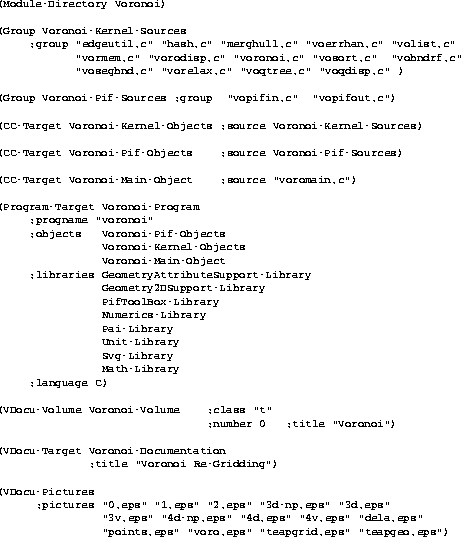
Figure: Module definition file for the application VORONOI (unabridged)





The base system integration of any application consists of
The placement of the application in the VISTA source code tree only seems to be trivial, but in fact requires the semantical identification of the functionality and role of the new feature, which is a conceptually important step that is sometimes hard to undertake. The use of VMAKE for automatic building of the application is a comparatively easy and straightforward task.
The base system integration does not yet include any technology CAD specific features. This type of integration corresponds roughly to the Platform Integration as defined by Wasserman [56].
VORONOI has been located in vista/framewrk/voronoi and the build information for VMAKE is contained in a file (vmfile.mk), which is shown in Figure 8.2.

Figure: Module definition file for the application VORONOI (unabridged)
Like every other component of the framework, VORONOI strictly uses the base system libraries (these are always linked automatically and do hence not appear in the listed vmfile.mk) to process the command line arguments, to access files, and to issue error messages.
VORONOI also registers its own (application-specific) error handler to the global VISTA error system (which is part of the base system) to write the current state of the Delaunay and Voronoi graphs as .svg file. (Figures 6.8, 6.23, and 6.22 have been created using this feature.)
The base system integration of VORONOI ensures portability and includes the application in automated test, verification, release, and installation procedures.




